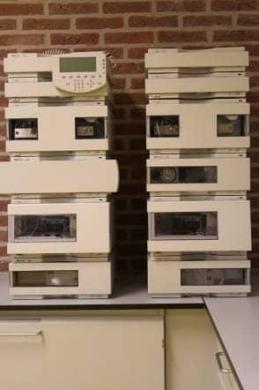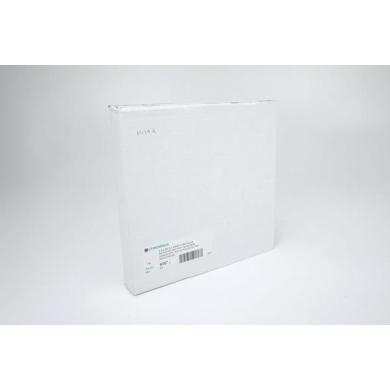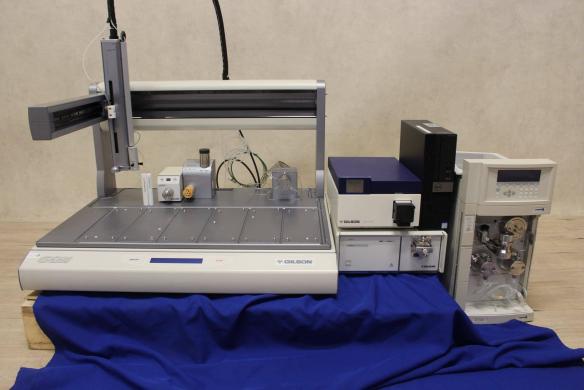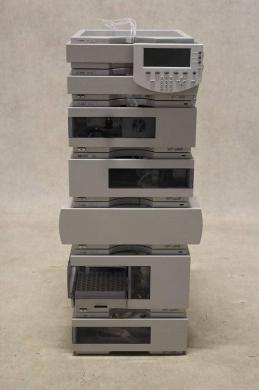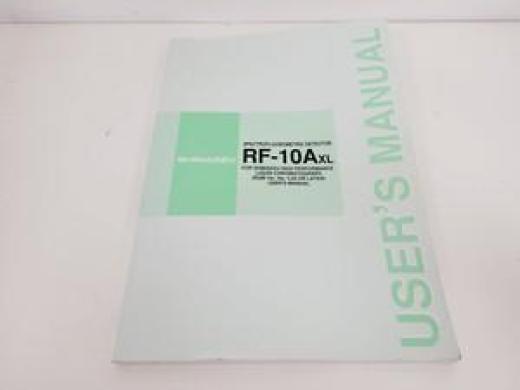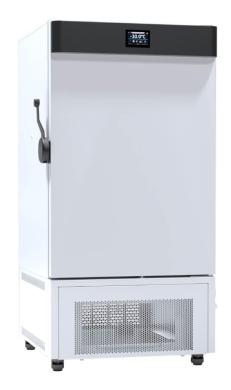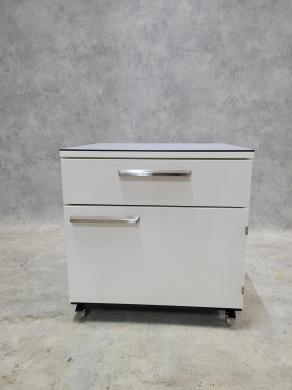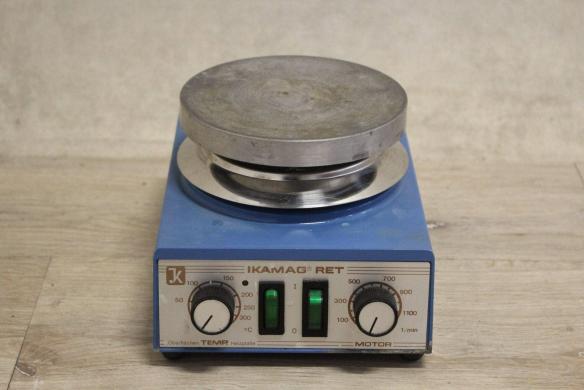Easily list your scientific equipment
Top suppliers for laboratory & industry
New and used instruments
Agilent Series 1100 HPLC System
System contains:
2 Solvent cabinets
2 Capillary pumps
1 Well-plate samplers
2 Autosampler thermostats
1 Thermostatted colomn compartment
1 Diode array detector
1 Handheld control module
Vacuum degasser cel is missing in the vacuum degasser
Capillary pump:
Settable column flow range: 0.01 – 20 µl/min
Recommended column flow range: 1 – 20 µl/min
Column flow precision: < 0.7 % RSD or 0.03 % SD (typically 0.4 % RSD or 0.02 % SD), at 10 µl/min and 50 µl/min column flow (based on RT, default setting)
Optimum composition range: 1 to 99% or 5 µl/min per channel (primary flow), whatever is greater
Composition precision: < 0.2 % SD, at 10 µl/min (20 µl flow sensor), 50 µl/min (100 µl flow sensor) and 1 ml/min (normal mode) default setting
Delay volume: Typically 3 µl from the electronic flow control to the pump outlet for flow rates up to 20 µl/min.
Pressure range: 20 to 400 bar (5880 psi) system pressure
Compressibility compensation: User-selectable, based on mobile phase compressibility
Recommended pH range: 1.0 – 8.5, solvents with pH < 2.3 should not contain acids which attack stainless steel. Upper pH range is limited by fused silica capillaries.
Well-plate sampler:
Safety features: Leak detection and safe leak handling, low voltages in maintenance areas, error detection and display
Injection range: 0.01 – 8 µl in 0.01 µl increments
Precision: Typically < 0.5 % RSD of peak areas from 5 – 40 µl, Typically < 1 % RSD from 1 – 5 µl, Typically < 3 % RSD from 0.2 – 1 µl
Sample viscosity range: 0.2 – 5 cp
Sample capacity: 2 × well-plates (MTP) + 10 × 2 ml vials, 100 x 2 ml in one tray, 40 x 2 ml in half tray
Injection cycle time: Typically < 30 s using following standard conditions: Default draw speed: 4 µl/min, Default eject speed: 10 µl/min, Injection volume: 0.1 µl
Carry-over: Typically < 0.05 % using the following conditions: Column: 150 x 0.5 mm Hypersil ODS, 3 µm
Mobile phase: Water/Acetonitrile = 85/15
Column Flow rate: 13 µl/min
Injection volume: 1 µl caffeine (=25ng caffeine), 1 µl water to test carryover. Outside wash of needle before injection: 20 sec with water using flush port
Autosampler thermostat:
Temperature range: setable from 4 °C to 40 °C in 1 ° increments
Temperature accuracy at ambient temperatures < 25 °C and humidity < 50%: – 1°C to + 4 °C at a setpoint of 4 °C
Temperature accuracy at ambient temperatures > 25 °C and/or humidity > 50%: – 1°C to + 5 °C at a setpoint of 4 °C
Thermostatted colomn compartment:
Temperature range: 10 degrees below ambient to 80 °C, up to 80 °C: flow rates up to 5 ml/min
Temperature stability: ± 0.15 °C
Temperature accuracy: ± 0.8 °C (± 0.5 °C With calibration)
Column capacity: Three 30 cm
Warm-up/cool-down time: 5 minutes from ambient to 40 °C, 10 minutes from 40 – 20 °C
Dead volume: 3 µl
Communications: Controller-area network (CAN), GPIB, RS-232C, APG Remote: ready, start, stop and shut-down signals, LAN via other series module
Safety and maintenance: Extensive diagnostics, error detection and display (through control module and Agilent ChemStation), leak detection, safe leak handling, leak output signal for shutdown of pumping system. Low voltages in major maintenance areas.
Diode array detector:
Detection type: 1024-element photodiode array
Light source: Deuterium and tungsten lamps
Wavelength range: 190 – 950 nm
Short term noise (ASTM) Single and Multi-Wavelengt: ± 1 × 10-5 AU at 254 and 750 nm
Drift: 2 × 10-3 AU/hr at 254 nm
Linear absorbance range: > 2 AU (upper limit)
Wavelength accuracy: ± 1 nm Self-calibration with deuterium lines, verification with holmium oxide filter
Wavelength bunching: 1 – 400 nm Programmable in steps of 1 nm
Slit width: 1, 2, 4 , 8, 16 nm Programmable slit
Diode width: < 1 nm
Flow cells: 13 µl volume, 10 mm cell path length and 120 bar (1760 psi) pressure maximum
Control and data evaluation: Agilent ChemStation for LC
Analog outputs: Recorder/integrator: 100 mV or 1 V, output range 0.001 – 2 AU, two outputs
Communications: Controller-area network (CAN), GPIB, RS-232C, APG Remote: ready, start, stop and shut-down signals, LAN optional
Safety and maintenance: Extensive diagnostics, error detection and display through control module and ChemStation), leak detection, safe leak handling, leak output signal for shutdown of pumping system. Low voltages in major maintenance areas.
GLP features: Early maintenance feedback (EMF) for continuous tracking of instrument usage in terms of lamp burn time with user-settable limits and feedback messages. Electronic records of maintenance and errors. Verification of wavelength accuracy with built-in holmium oxide filter.
Handheld control module:
The control module provides complete local control and monitoring of a single module or an entire Agilent series system. There is no data evaluation in the control module. The control module allows you to do a variety of HPLC tasks including automated sample preparation and injection, isocratic, gradient and multiple method analyses.
QuestPair is a platform to find and acquire laboratory equipment by connecting research organisations, universities, and companies with high-quality, affordable instruments. The platform facilitates multiple sales daily worldwide and works with partners around the globe to provide trusted, vetted products for a wide variety of scientific needs. Our in-house developed AI algorithms collect data on the usage and availability of scientific instruments, enabling us to provide tailor-made assistance in sourcing suitable laboratory equipment. With a focus on cost-effectiveness and sustainability, QuestPair has an excellent track record in streamlining acquisitions for laboratories to further scientific research and development.
Customer Service
Here to help you with: Product Inquiries, Shipping & Support, Technical Support, Business Inquiries and Press.
We are available to assist you Mon-Fri, 10am - 5pm CET.
